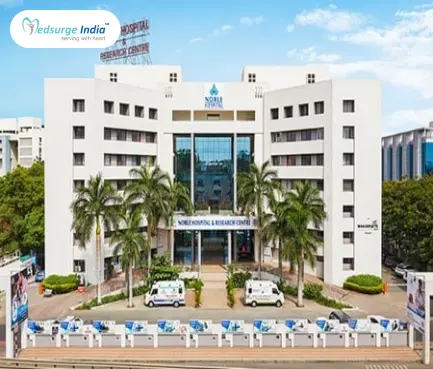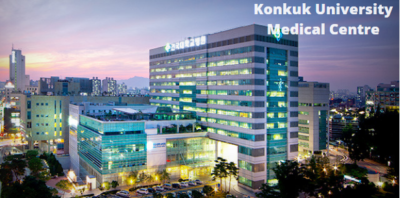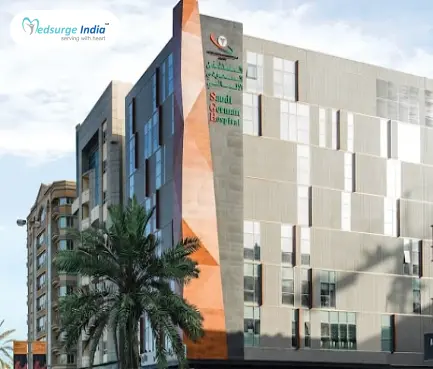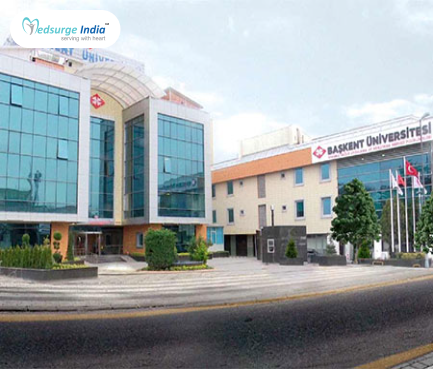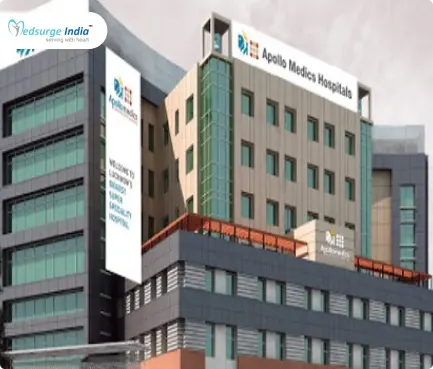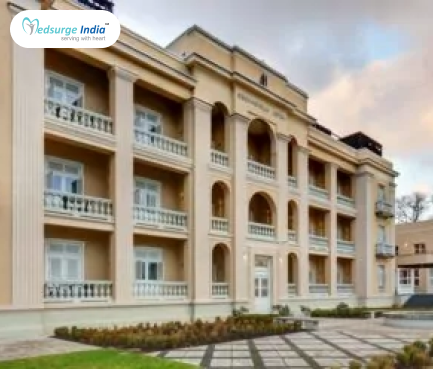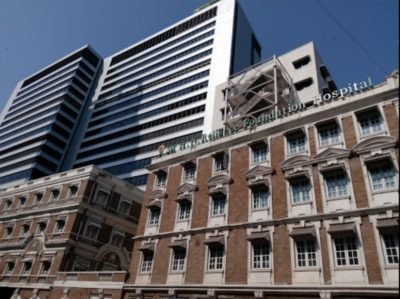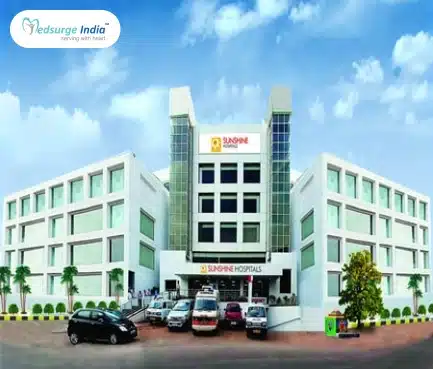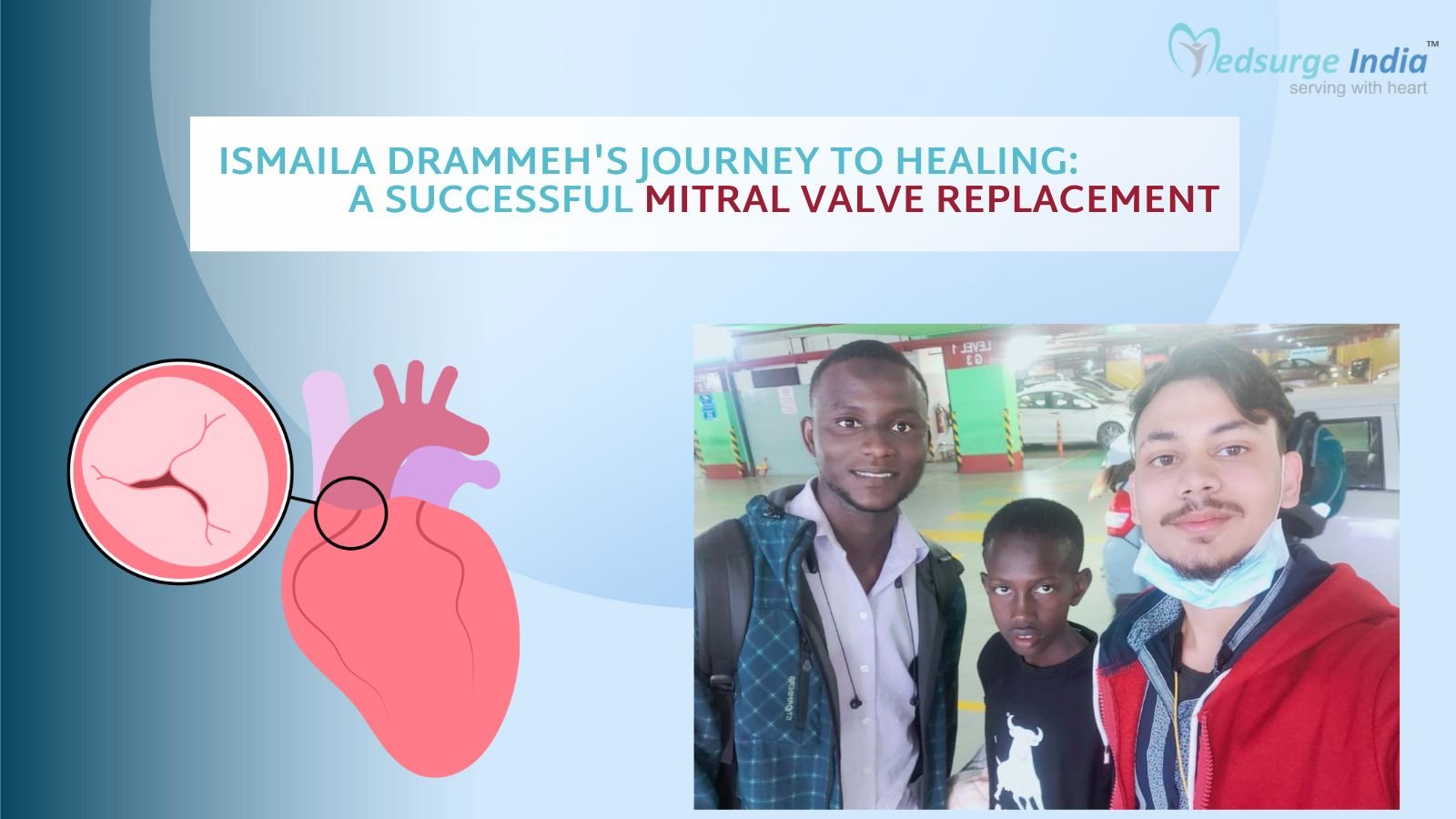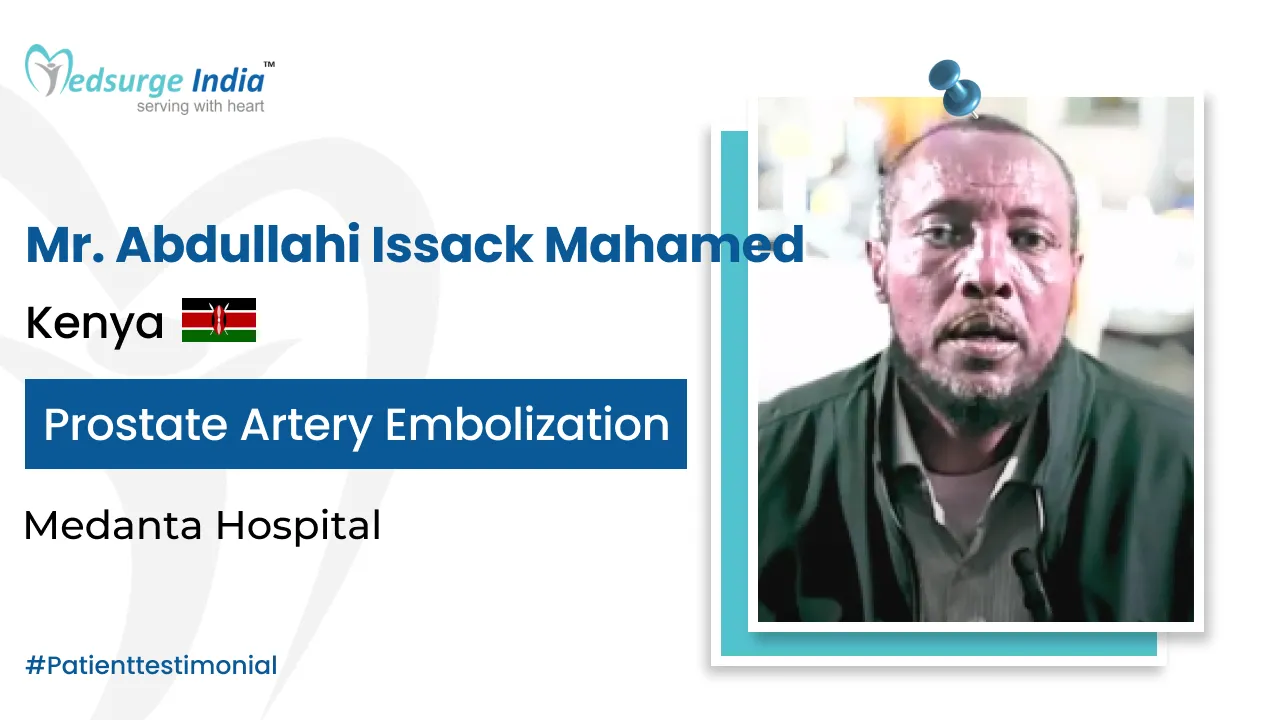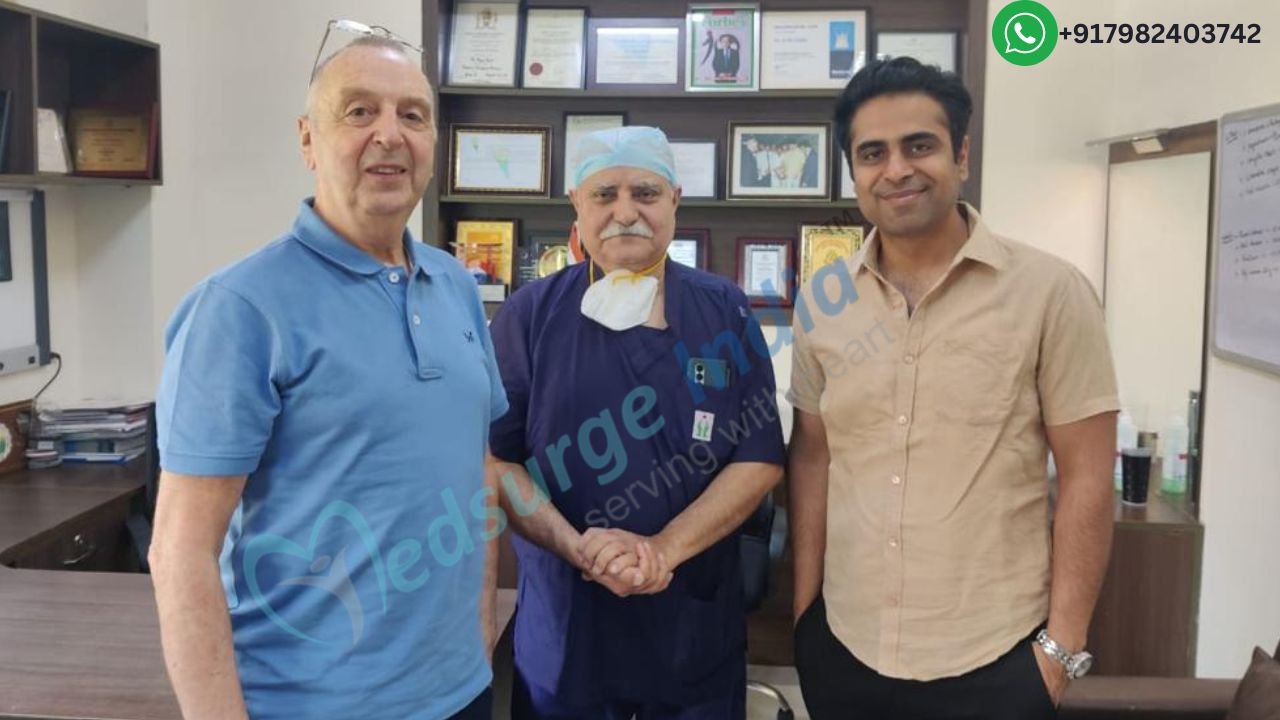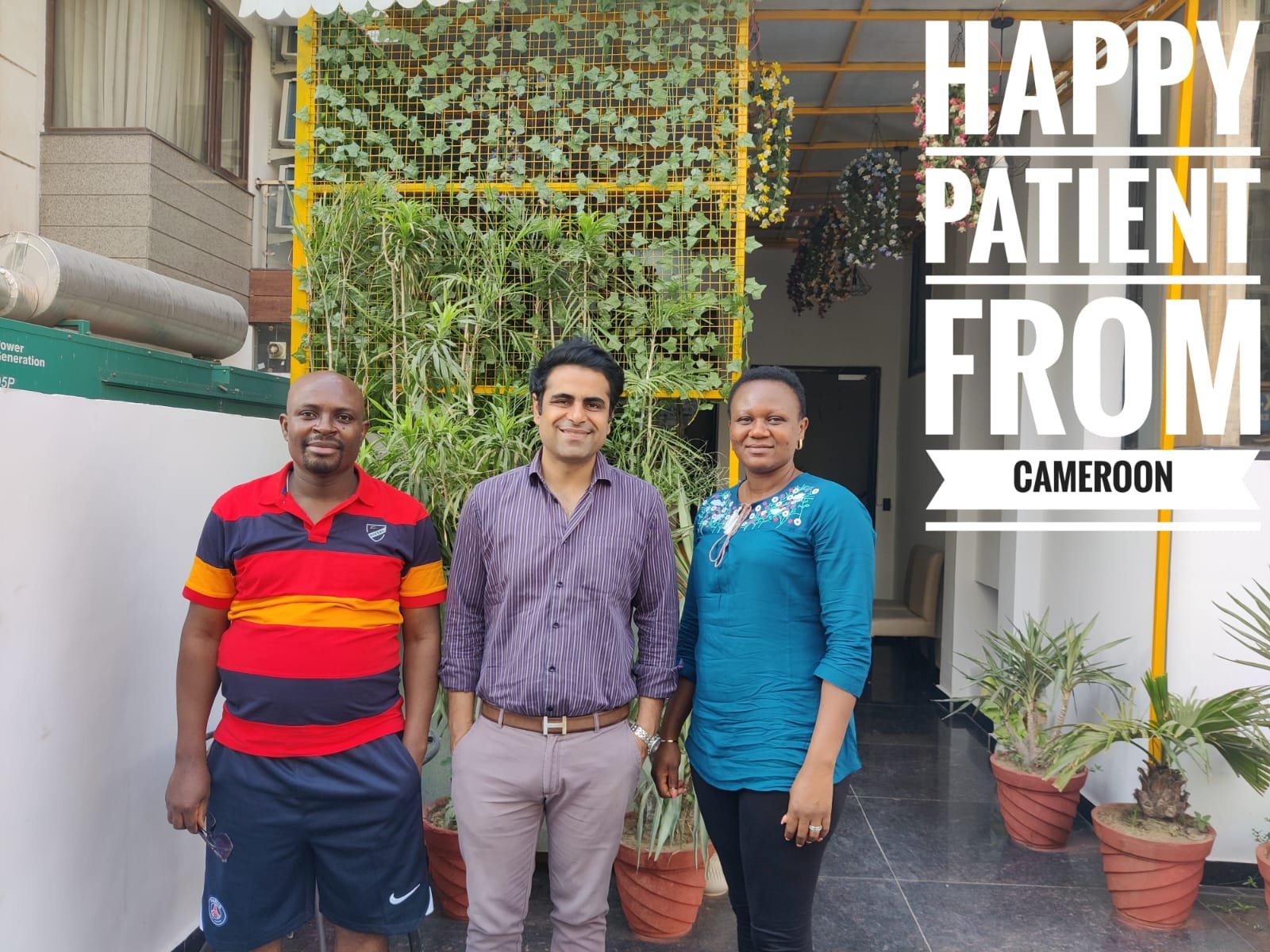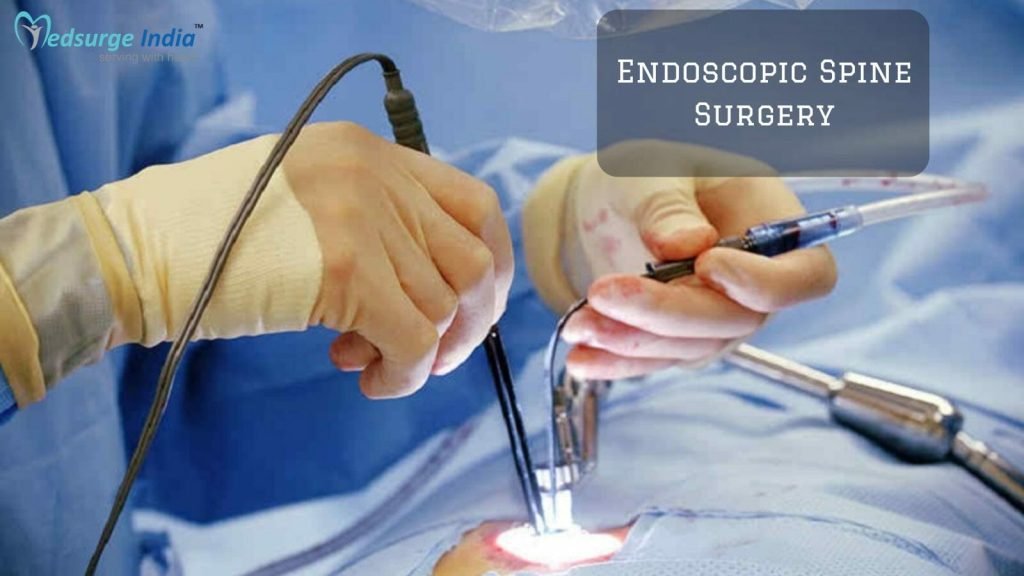
Endoscopic spine surgery in India is a minimally invasive spine procedure used to treat conditions like stenosis, spinal arthritis, and disc hernia that cause back pain and sciatica. A number of small surgical tools, as well as a small video and monitor, allow this surgery to be performed without opening huge areas of the back, resulting in a safer procedure with no injury to the connective tissues. For this minimally invasive procedure, an endoscope is used to minimize body disruption, direct visualization, and magnification to observe the organs and spine.
Because there is no need to stay in a hospital after the procedure, the cost of endoscopic spine surgery in India is lower than in any other country.
What Is Endoscopy Spine Surgery?
The most common endoscopic treatment for cervical (neck discomfort) and the lumbar disc is endoscopic spine surgery in India. It is a minimally invasive surgical treatment for herniated disc material in the lumbar, thoracic, and cervical areas that cause pain. The lumbar disc covers the back and legs, the thoracic disc covers the mid-back, and the cervical disc covers the neck and arms. Endoscopic surgery for the spine is a safe, effective, and minimally invasive procedure. To treat the damaged discs, no component of the spine or muscles needs to be removed. Significant cuts are avoided since an endoscopic camera is used to see the spine. As a result, endoscopic surgery is a safe choice for addressing spinal problems, and the process takes about 30 minutes. The patient is usually discharged after 2-3 hours of the surgery.
A person can proceed following types of endoscopic spine surgery in India :
Transforaminal Endoscopy Discectomy: An endoscopic discectomy is the least invasive technique for treating pain caused by herniated, protruding, or bulging discs. The doctor uses an endoscope to decompress the disc, relieving pressure on the spinal nerve that is causing pain in the patient.
Endoscopic Foraminalplasty: Endoscopic foraminalplasty is one of the least invasive operations available for relieving pressure on an exiting nerve or the spinal cord itself caused by a herniated disc, scar tissue, or bone spurs.
Endoscopic Annuloplasty: This surgery can address nerves grown into the disc causing discomfort and provide pain relief without the necessity for a spinal fusion when patients have tears in the annulus walls of their discs.
Endoscopic Rhizotomy: An endoscopic rhizotomy is the least intrusive outpatient surgery for individuals suffering from chronic low back pain or muscle spasms.
Endoscopic Laminotomy: Patients with lumbar spinal stenosis who have not responded to conservative treatment should consider this operation.
Patients should consider the least invasive option before turning to standard or even endoscopic minimally invasive spinal surgery such as a laminectomy, microdiscectomy, or spinal fusion. Endoscopic spine surgery in India can help relieve pain in the back and legs by treating painful conditions without the risks and extended recovery times than traditional surgical approaches involve.
Endoscopic Spine Surgery Cost In India
On average, Endoscopic Spine Surgery Cost in India starts from USD 5,000. Furthermore, the treatment cost for Endoscopic Spine Surgery in India will depend on the type of hospital or the place you choose.
Estimated prices depending on different cities in India
| Cities | Starting Price |
| Delhi | USD 5,000 |
| Gurgaon | USD 5,000 |
| Noida | USD 5,000 |
| Mumbai | USD 5,200 |
| Hyderabad | USD 5,000 |
| Chennai | USD 5,000 |
| Kolkata | USD 5,000 |
| Bangalore | USD 5,200 |
Note: Do remember that the pricing and the treatment for Endoscopic Spine Surgery cost in India will vary depending on the patient’s choice and other various factors.
Factors That Can Affect Endoscopic Spine Surgery Cost in India
The following here are some variables that can affect Endoscopic Spine Surgery Cost in India:
- Medication costs.
- Duration of treatment.
- Geographical location.
- Hospitalization expenses.
- Government policies and subsidies.
- Medical tourism packages.
- Hospital reputation and infrastructure.
- The expertise and experience of medical professionals.
- The type and frequency of diagnostic procedures.
- The choice of treatment modality.
Furthermore, even the standard and grade of medical care and amenities are comparable to those of the most prestigious healthcare facilities in the world, even when the expense of lodging, meals, and transportation is taken out. Also, under the direction of the most skilled physicians, Medsurge India provides patients with the lowest Endoscopic Spine Surgery Cost in India.
Who Is the Right Candidate for Endoscopy Spine Surgery?
Many of the individuals who are right candidates for endoscopic spine surgery have been diagnosed with common spinal conditions. Moderate to severe disc herniation, facet arthropathy, sciatica, and spinal stenosis are among the diagnosis. However, surgery is not always the first line of defense. Before undergoing any type of endoscopic spine surgery, including spine decompression surgery, it is typically suggested that non-surgical treatments (such as spinal injections and physical therapy) be undertaken.
Traditional treatments such as minimally invasive, micro-invasive, and/or laser spine surgery should not be confused with endoscopic spine surgery. In the experienced hands of a spine surgeon who regularly performs endoscopic spine surgery using tubular retractors and the endoscope – the surgery is performed in a different way offering patients many potential benefits, including:
- Tubular retractors eliminate the necessity for soft tissue cutting (eg, skin tissue-to-muscle injury or damage)
- Blood loss is reduced.
- Post-operative discomfort or pain is reduced.
- Recovery and healing times are short.
However, ESS may not be suitable for many types of spine surgery, including scoliosis, spinal instability, cancer, and trauma. The surgeon may prescribe a typical open or minimally invasive spine treatment in these circumstances.
Get Free Cost Estimation
Procedure
How Is Endoscopic Spine Surgery is Performed?
The patient is first prepared for surgery by receiving local anesthesia to relieve pain. A tubular trocar (about the width of a pencil) is inserted through a 1-inch or smaller skin incision. The endoscopic procedure may enter the spine using one of two ways, depending on the patient’s specific diagnosis: intralaminar (from the rear of the spine between two laminae) or transforaminal (from the back/side of the spine into the neuroforamen; a nerve passageway).
Then, through the trocar, a small camera is placed into the targeted location of the spine. The camera captures and projects real-time images of the surgical site onto a monitor in the surgeon’s direct vision throughout spine tumor surgery. During the surgical procedure, the endoscopic camera assists and guides the surgeon. The endoscopic camera and trocar are gently withdrawn after the operation, and the small incision is closed with a suture and a small dressing.
Such spine surgery is affordable as compared to other minimally invasive surgery because no stay in the hospital is required after the surgery.
What Are the Advantages of Endoscopic Spine Surgery?
- The use of an HD camera in endoscopic procedures allows the spinal surgeon to see the damage to the spine clearly and real close.
- The procedure uses a 1/4-inch incision, which reduces the risk of scarring.
- Less scar tissue means the patient’s spine movement is preserved.
- There is no requirement for general anesthesia.
- Patients have less discomfort following surgery, therefore they don’t need as many painkillers.
- After surgery, you will have less time to recover before you can resume your typical activities.
- After surgery, patients can return to work sooner.
- The chances of infection are rare.
Potential Risks: ESS is a highly specialized surgical technique that is still in its early stages of development. As a result, only a small percentage of spine surgeons are adept with ESS procedures. Revision surgery, cases of evident spinal instability, high-grade spondylolisthesis, and/or cancer are usually not candidates for endoscopic spine surgery in India.
Conclusion
Endoscopic spine surgery, a spine surgical alternative that could be considered revolutionary in nature, has been developed thanks to advances in technology and technique. The potential benefits of this extreme version of endoscopic minimally invasive spine surgery in the hands of a highly skilled and experienced spine surgeon may give relief to a new generation of patients suffering from chronic back and neck pain.
There are always advantages and risks connected with any type of spine surgery, including ESS. That’s why it’s critical that you and your spine surgeon evaluate the potential benefits and risks of using an endoscopic spine surgery approach to treat your spinal disease.
The Most Important Frequently Asked Questions
Q: What Is Endoscopic Spine Surgery’s Success Rate?
A: Endoscopic discectomy surgery is a highly successful treatment, according to published follow-up research and our own observations. Over 80% of patients had great post-surgical outcomes, according to research that followed them for ten years. None of the patients had negative outcomes.
Q: Is It Painful to Have an Endoscopic Discectomy?
A: After a Lumbar Endoscopic Discectomy, it’s time to get back on your feet. Pain medication may be used to treat the surgery’s initial pain. For a few weeks after the treatment, patients are recommended to avoid bending, lifting, or twisting. Nerves can take longer to repair, and patients may have numbness and tingling in their legs for a while.
Q: Is There Going to Be a Lot of Pain During and After the Surgery?
A: You’ll be given local anesthesia, which means you won’t feel any pain because the operation region will be numbed. It is common to experience some pain and discomfort following surgery. This may pass in a few days, but if it becomes terrible, you may be prescribed pain medication, which you should discuss with your doctor.
Q: Is Spine Surgery a High-Risk Procedure?
A: Complications are a possibility with any procedure. These problems (if they occur) can be exceedingly significant when surgery is performed near the spine and spinal cord. Complications could include pain and damage in the future, as well as the need for more surgery.
Q: Is It Possible That Spinal Surgery Will Have an Impact on Your Brain?
A: The majority of spinal procedures are done under general anesthesia. You’ll be put to sleep with drugs administered through an intravenous (IV) line, so you won’t feel any pain during the treatment. Anesthesia poses a small but significant risk. Heart attacks, strokes, brain damage, and death are among the dangers.
Top Hospitals for Endoscopic Spine Surgery in India
Top Doctors for Spine Surgery
Dr. Neeraj Gupta
Consultant
Experience: 20 Years
Indian Spinal Injuries Center, New Delhi
New Delhi, India
Dr. Vikas Tandon
Senior Consultant
Experience: 23 Years
Indian Spinal Injuries Center, New Delhi
New Delhi, India
Dr. Ankur Nanda
Senior Consultant
Experience: 20 Years
Indian Spinal Injuries Center, New Delhi
New Delhi, India
Dr. Vidyadhara S.
HOD
Experience: 21 Years of experience
Manipal Hospital (Old Airport Road) Bangalore
Bangalore, India
Dr. Gururaj M
Senior Consultant
Experience: 15 Years
Indian Spinal Injuries Center, New Delhi
New Delhi, India
Dr. H. S. Chhabra
Chief of Spine and Rehabilitation Centre
Experience: 32 Years
Sri Balaji Action Medical Institute, Delhi
Delhi, India
Dr. Saransh Gupta
Consultant
Experience: 17 Years
Indian Spinal Injuries Center, New Delhi
New Delhi, India
Dr. Rajagopalan Krishnan
Senior Consultant
Experience: 35 years of experience
Indraprastha Apollo Hospital, New Delhi
New Delhi, India
Dr. Sajan K Hegde
Senior Consultant
Experience: 34 years of experience
Apollo Hospitals, Greams Road, Chennai
Chennai, India
Dr. Vineesh Mathur
Director , MBBS, MS, DNB
Experience: 28+ years of experience
Medanta - The Medicity, Gurgaon
Gurgaon, India

